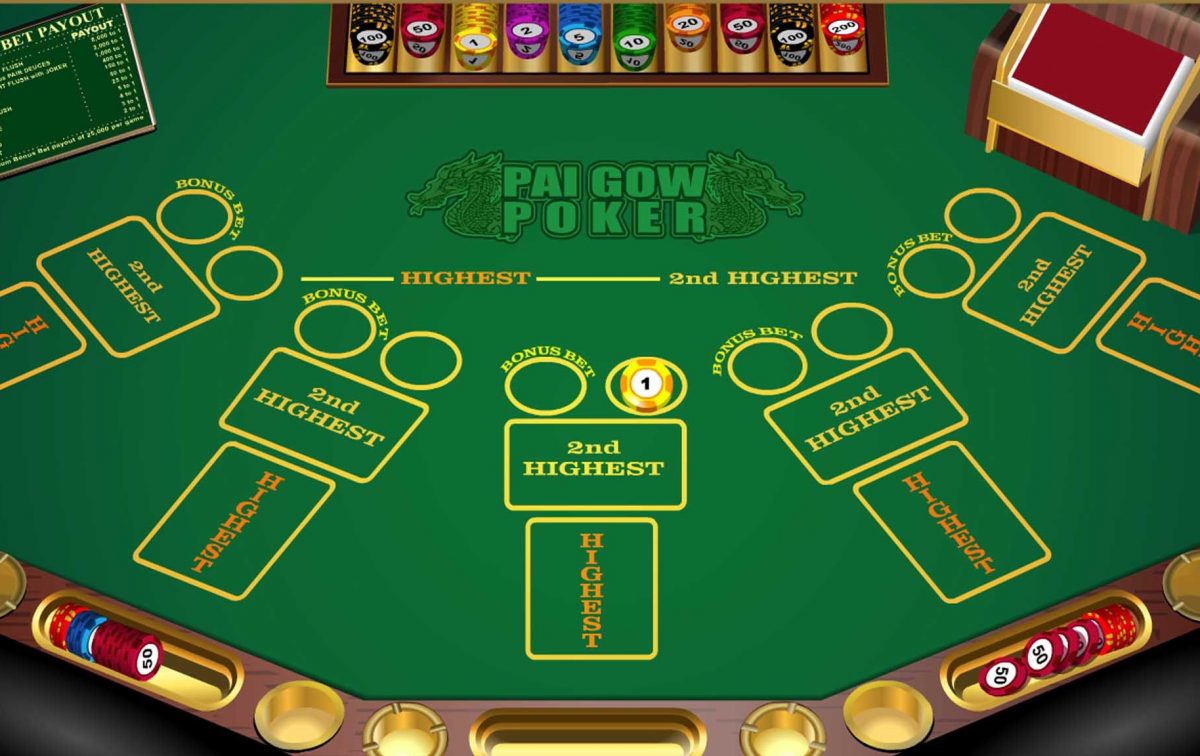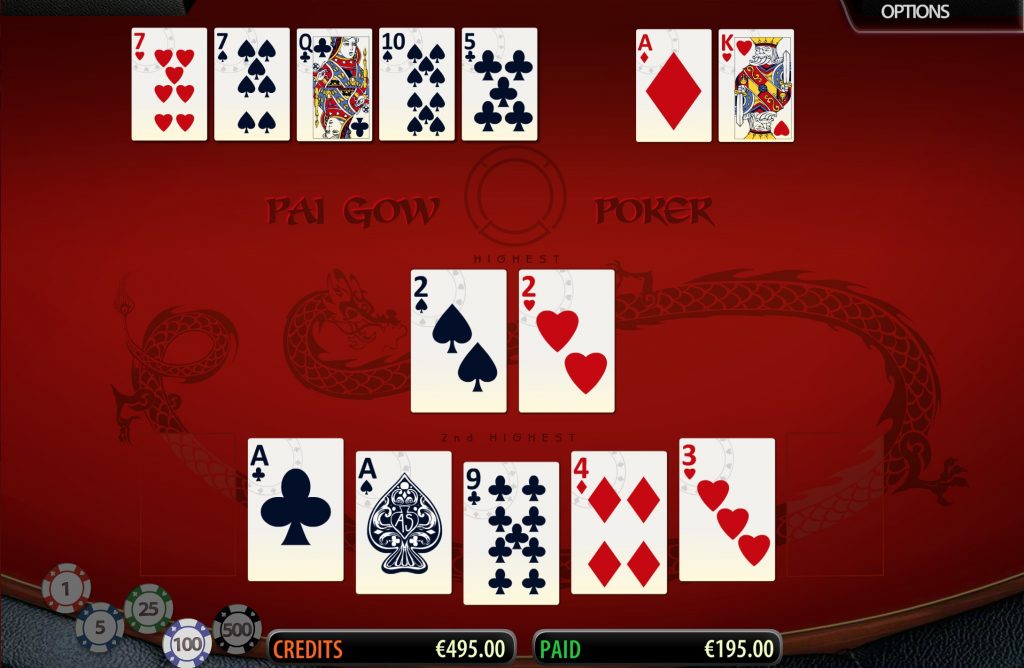
The system of playing pai gow poker
The strategy of forming combinations requires careful study. Let’s understand step by step how to play pai gow poker.
The optimal strategy for playing Pai Gow Poker

On specialized foreign sites devoted to Pai Gow Poker, and forums, where fans of the game, you can find a very detailed table of the basic strategy. They go into great detail on what to do with the cards. We’re going to give you simple rules that should be followed to reduce your casino advantage substantially. Let’s start with the fact that the entire strategy of playing Pai Gow Poker can be reduced to one rule: you must form the maximum combination of two cards, which is possible with a stronger hand of five cards.
Very often it will look like this: a fairly weighty pair in the high hand and one or two big cards in the low hand. Believe me, with such a seemingly unlucky hand, you’ll often win on two hands at once.
Also, you’ll have to get used to the idea that big combinations (a square, a royal flush, a straight flush) don’t bring extra payouts, so they often need to be separated.
Now let’s analyze various typical situations.
Pairs and combinations over no
You should pick the second and third strongest cards in the low hand and leave the strongest card in the high hand. There are exceptions to this rule, but they are rare and have almost no effect on your casino advantage.
There is one pair in the cards
Pair should be left in the high hand, and the two highest cards from the remaining cards selected in the junior combination. There are no exceptions. You will see the above two examples in over sixty percent of your pai gow poker games. So these rules should be memorized by heart.
There are two pairs in the cards
This is probably the most difficult case where you have to make different decisions, depending on the circumstances. After all, a player can leave two pairs in five cards, or he can divide one pair for each hand. As a rule, the older one of the pairs is, the more often they have to be taken out in a low hand.
Here are some basic guidelines for playing two pairs

- Always put a pair of aces in your low hand. Regardless of what cards make up the other pair.
- Send a pair of kings to the junior combination if the second pair is sevens or higher.
- If you have an ace with a weak card, split kings with a pair of threes or higher; queens with a pair of fives or higher; jacks and tens with a pair of nines and eights.
- Always leave two pairs in the high hand if you can take an ace in the low hand with any picture. But separate the two pairs from the pictures if there is no ace-king in the junior combination.
- Never split small pairs (sixes and below).
In all other cases, leave pairs together with an ace and any card. If there is no ace, split pairs into two hands.
The cards have three pairs.
Here it’s simple and without variations: you have to take the highest pair in the junior hand.
In cards with one or two tris
Tris are played in different ways:
- Tris of queens and less strong cards should always be left in the high hand.
- Three aces should always be split, leaving a pair in five cards and separating one ace with the high card.
- The three kings must be split in the same way if the high card is a jack or lower.
- If there are two threes, you must separate a pair from the high card into a low combination.
- In straight and/or flush cards (straight flush, royal flush)
Streets, flushes, and straight flushes should also be played according to the situation:
- If the cards only have a flush or straight, leave the combination and put the remaining cards into a low hand.
- If there are two such combinations (flush, straight, or flush and straight), you have to keep one of them, putting the maximum possible cards into the low hand. For example, if you have seven cards in order, you need to separate the two highest cards. Similarly, you should sacrifice a flush in favor of a straight if that strengthens your low hand.
With a straight or flush with one pair, a card from which is part of the combination, you have to act according to the situation. If you can keep a pair of cards and put an ace with a picture into your junior hand, just do so and forget about the straight or flush, which only allows you to keep a queen or a weaker card.
- If a straight or flush is caught with two pairs, act according to the recommendations for drawing two pairs, and ignore the straight and flush.
- Play the straight and flush with three pairs following the three-pair guidelines, ignoring the five-card hand.
- You don’t need to split the straight and flush with three pairs. Separate a pair or even an ace from them.
- Straight flushes and royal flushes are played as straight and flush in all cases.
In full house cards
Usually with a full house, you keep the three in the high hand and put the pair in the low hand. However, if you have a very small pair and the side cards are very strong (ace and picture), a full house can be left.
In the cards of the square
The caret should almost always be split into two pairs if the other cards don’t have a pair or higher cards (such as an ace). We won’t focus our attention on the rare cases of the square.
As you can see, even the simplified strategy of playing Pai Gow Poker looks not so simple. You can meet the recommendations, which on some points differ from ours. Particularly frequent discrepancies are found in the advice on playing two pairs or straight flushes.
This indicates that many attempts have been made to simplify the complex optimal strategy for pai gow poker. Also, unusual nuances of the rules (side bets and so on) may be taken into account. Yes, and disputes over some nuances still persist. In any case, the differences in the effectiveness of different versions are insignificant. If even the basics are observed, the casino’s advantage drops to about 2.7%.
